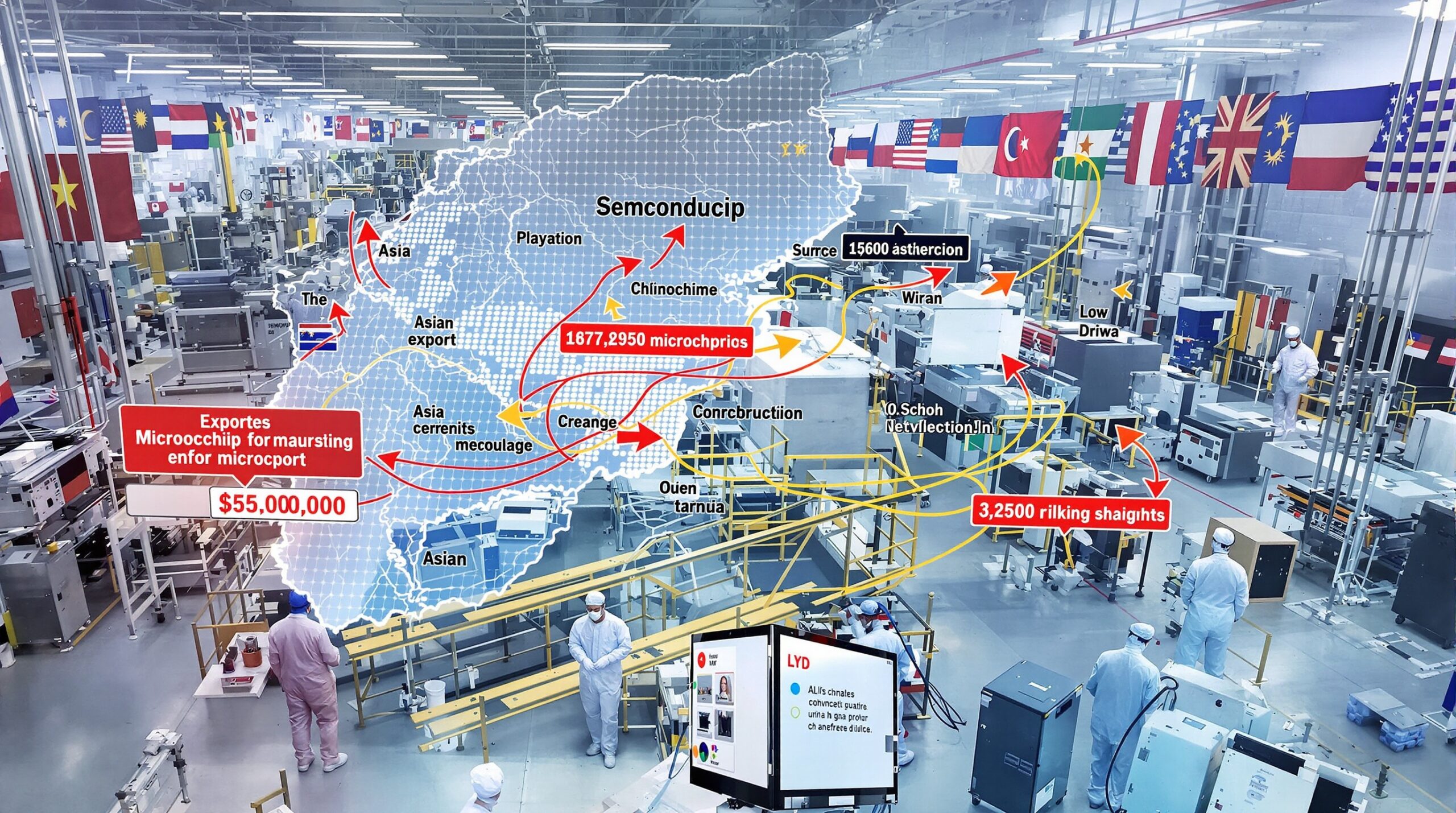Governments globally recognize the strategic importance of microchips in powering economies and military systems. Recent export restrictions have triggered significant shifts in the intricate web of semiconductor alliances, especially in Asia. These measures, primarily enacted in the United States and its allies, aim to limit advanced technology access to rival nations while strengthening domestic technological sectors. As a consequence, Asian semiconductor partnerships and supply chains are being drastically reconfigured.
Background: Rising Geopolitical Tensions
Semiconductors, also known as microchips, are crucial for modern devices such as smartphones, computers, cars, and defense systems. Control over the semiconductor supply chain underpins economic competitiveness and national security. The United States, Japan, and the Netherlands have imposed export restrictions to curb Chinese access to cutting-edge chip technology. This policy shift responds to concerns over intellectual property theft, security vulnerabilities, and global power dynamics.
Asian Semiconductor Landscape Before Export Curbs
Before the introduction of export controls, Asian countries formed a deeply interconnected ecosystem. South Korea and Taiwan established themselves as leading chip producers, focusing on fabrication and advanced packaging. Japan supplied key equipment and raw materials, becoming indispensable to the regional value chain. Meanwhile, China invested heavily in chip design and manufacturing, aspiring to reduce reliance on foreign technology. The region enjoyed mutual benefits from open-market principles and a continuous flow of skills and technology.
Implementation of Export Curbs
Beginning in 2022, the United States unveiled sweeping export restrictions on advanced semiconductors and chipmaking equipment bound for China. Japan and the Netherlands quickly followed suit, targeting specialized machinery such as extreme ultraviolet lithography equipment. These actions severely restricted Chinese chipmakers’ access to the latest fabrication tools, materials, and intellectual property. Enforcement involves tight licensing regimes and coordination between governments and industry stakeholders.
Direct Effects on Semiconductor Alliances
Export curbs disrupted cross-border collaboration and investment, leading to a re-evaluation of long-standing partnerships. Taiwan’s TSMC and South Korea’s Samsung, global chip leaders, face intense political pressure to align with US policies. Their investments and joint ventures in China now face greater scrutiny and limitations. Meanwhile, Japanese equipment suppliers re-shuffled supply agreements, prioritizing stable markets over riskier Chinese demand. These moves altered the dynamics that previously supported trust and efficiency.
Responses from China and Regional Adjustment
China intensified its semiconductor self-sufficiency drive in response to the curbs. Beijing invested billions in R&D and domestic manufacturing capacity. The government offered subsidies to nurture home-grown alternatives to foreign chipmakers. Chinese tech giants pivoted toward designing less advanced, but legally accessible, microchips for domestic electronics. Simultaneously, China sought to deepen cooperation with countries not aligned with Western export restrictions, driving new technology pacts with Southeast Asian nations.
Alignment and Fragmentation in Asian Partnerships
Export curbs divided Asia’s semiconductor alliances into distinct blocs. US-aligned countries like Japan, South Korea, and Taiwan reinforced collaboration over advanced research, security standards, and supply chain resilience. These nations increased joint R&D programs and exchanged best practices to navigate technological bottlenecks. Additionally, they lobbied for global investment in local manufacturing facilities to safeguard their markets.
A parallel trend emerged as Southeast Asian countries like Malaysia, Vietnam, and Singapore positioned themselves as neutral players. They welcomed foreign investment and diversified semiconductor activities without taking clear political sides. Their chip assembly and testing industries benefited from re-routed supply chains and relocating global firms. However, these countries face careful balancing acts to avoid alienating key partners or triggering retaliatory trade measures.
Indigenous Innovation: Government-Led Collaboration
Countries hit hardest by export restrictions, particularly China, ramped up indigenous chip content and found new avenues for external collaboration. While short-term constraints limited their access to top-tier equipment, domestic champions began cooperating more intensively with local universities, state research centers, and national tech incubators. This trend fostered innovative approaches to circumventing current technical hurdles.
Risks and Opportunities in the New Environment
The evolving alliances pose risks of supply chain fragmentation and higher production costs. Firms must invest in redundant supply lines and technology development programs. These efforts, while increasing self-reliance, may create inefficiencies and duplication across the region. Chokepoints in raw material supply and advanced equipment persist, especially for nations left outside major technology agreements.
Conversely, export restrictions also present opportunities for ambitious technology firms and emerging markets. Startups in Southeast Asia leverage shifting alliances to attract investment and technical partnerships. Japan, South Korea, and Taiwan strengthen their resilience by deepening cooperation with allies and diversifying their customer base beyond China. Governments prioritize their national strategies, seeking to balance economic interests and security imperatives.
The Road Ahead for Asian Semiconductor Alliances
Microchip export curbs have triggered a long-term transformation in how Asian countries approach semiconductor development and commercialization. Countries will likely continue consolidating alliances around shared security and technological goals. New initiatives such as the US-led “Chip 4” alliance—uniting America, Japan, South Korea, and Taiwan—showcase ongoing efforts to structure collaboration, technology safeguards, and supply chain management.
At the same time, China and other affected nations are expected to double down on self-reliance and alternative partnerships. This creates a dual-track approach to innovation, where technological standards and market access differ between rival blocs. Competitive dynamics will drive both resilience and specialization, fueling further innovation but complicating global integration.
Conclusion
Export curbs on advanced microchip technologies have irreversibly reshaped Asia’s semiconductor alliances and market relationships. Technology development, national security, and economic opportunity are now deeply intertwined. Regional collaborations adapt to new realities, balancing cooperation, competition, and geopolitical pressures. How governments and companies manage these alliances will define Asia’s role in the global semiconductor race for years ahead.

